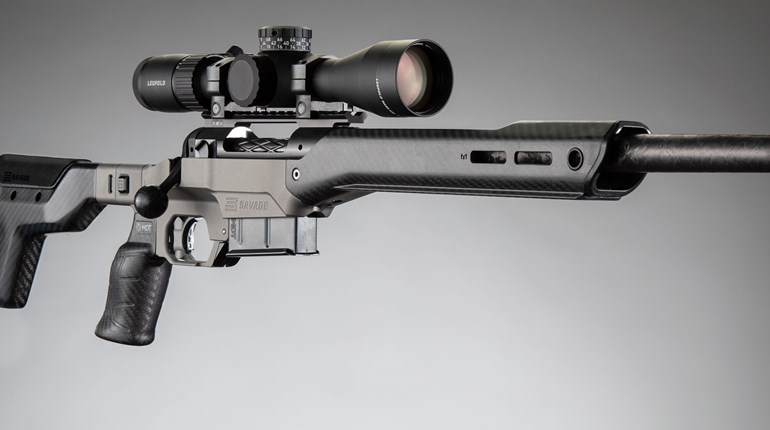
Kahles (pronounced “call-us”) is Austria’s oldest existing optical manufacturer, dating back to 1898 when Karl Robert Kahles took over the optics and mechanics workshop of Karl Sebastian Fritsch. Today, it is a sister company of Swarovski Optics and it’s where the company has decided to focus its efforts for a new line of tactical, long-range riflescopes. The Kahles K624i riflescope is an illuminated 6-24x56 mm scope with a 34 mm tube. It incorporates not only the precision adjustments and optical quality expected of expensive European scopes, but also boasts some innovative features for the long-range shooter.

For example, the parallax adjustment is located under the elevation turret. This allows the shooter to maintain position while using either hand to adjust parallax, allowing fast acquisition of multiple targets at varying distances. The scope can be ordered with a left-hand windage turret so that the shooter can maintain a grip with the right hand and use the left to make windage corrections. The Kahles K624i riflescope I received was set up that way, and while it took a bit of getting used to, once I became familiar with the operation, I found this scope very fast and intuitive when making windage, elevation and parallax changes.
The elevation adjustment has a second-rotation indicator as a red button that pops up out of the top of the turret. There is an easy-to-use zero stop and dial reset. To adjust, once you have the zero, loosen two screws, pull up on the dial and adjust it to zero. Then push it down, locking it in place with the screws. The windage has the same zero set, but without the stop function.
It has 26 mils of overall elevation adjustment in two rotations. Indexing has each click and line representing .1-MRAD (mil) for both elevation and windage. (The Kahles K624i riflescope is also offered in an MOA version.) There is a fast focus in the rear and the parallax focusing feature, which goes from 50 meters to infinity.
I mounted the Kahles K624i riflescope on an ultra-accurate 6 mm Creedmoor rifle I built as a project for my new gunsmithing book. I used Talley tactical rings and a Talley rail with 20-MOA elevation built into it. As a result, I could not dial low enough to shoot a traditional grid box for the test. Instead I considered the starting point to be the low-center of the grid and dialed the box above. As expected, the adjustments were precise and predictable; hitting each location on the target as expected. The scope returned to zero perfectly, as it did after multiple long-range shooting sessions.
Using the dial-up method I was able to make first-shot head shots on steel IPSC targets from 200 yards out to 500 yards (the maximum distance at my home range). Each time, the dial-up was precisely what was expected and in the end the scope returned exactly to zero.
There are four reticles available for the Kahles K624i riflescope. I elected to use the SKMR3 reticle, as I thought it was the best choice for long-range shooting. This is a first-focal-plane reticle and is illuminated with adjustable intensity.

The reticle’s open center has a small, .036-mil-diameter dot for precise aiming. The various hash marks are set up in mils or portions of mils and, again, I found them to be quite precise when shooting at various long-range targets using the holdover method. The descending lines grow increasingly wider and have hash marks to allow for windage holds. The center crosshair also has hash marks for windage holds if you are dialing up for distance and do not want to dial in wind changes.
Regarding the scope’s glass, the optical clarity is excellent, with 95-percent light transmission. The adjustments are made from hardened steel to resist wear and if their precision and repeatability are any indication, the machining is perfect.
Boasting quality components, solid construction, and innovative and useful features, the Kahles K624i riflescope is one of the best-engineered and user-friendly long-range scopes I have tried.







































